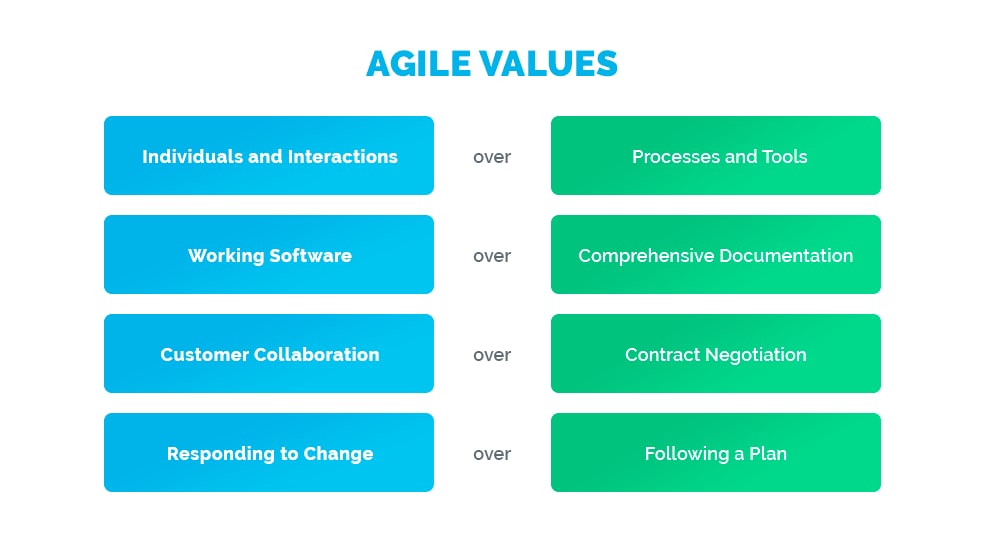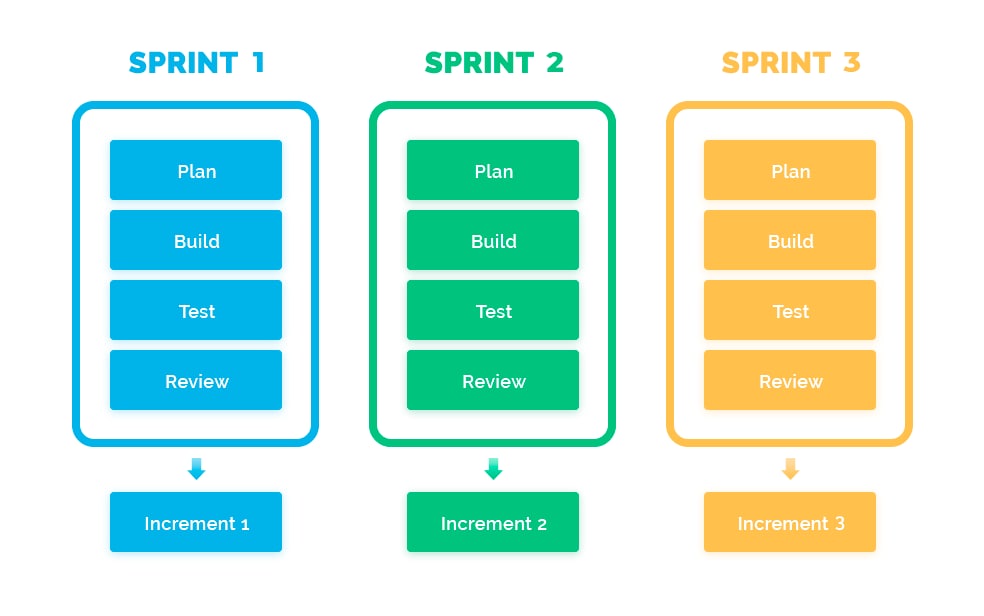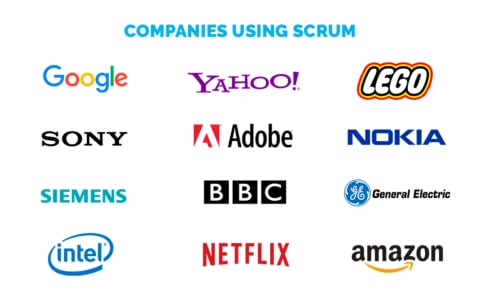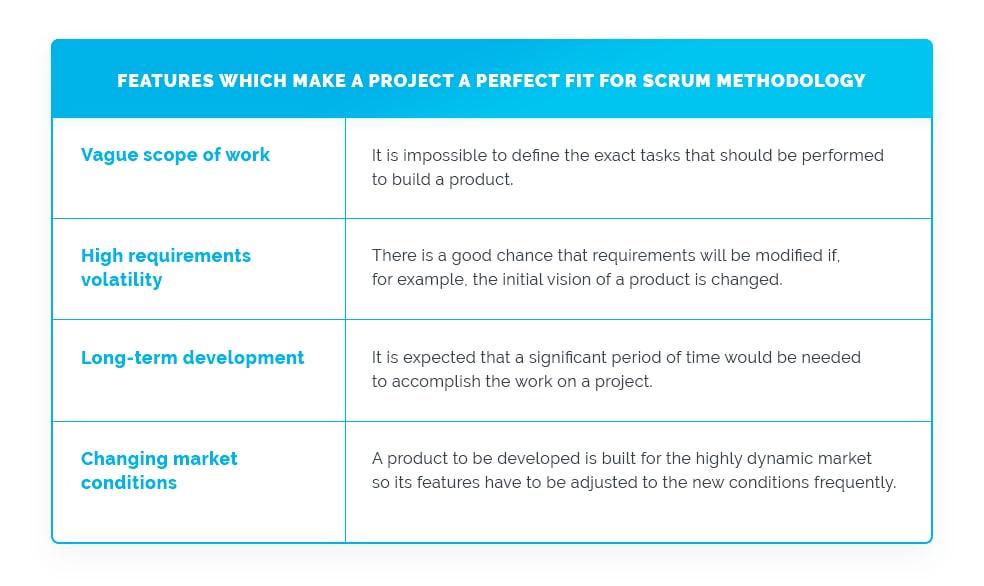Table of Contents
When it comes to software development, the final result is always influenced by numerous factors. The first things that pop up in our minds are budget, the expertise of software engineers, time limits, efficiently set workflow, and effective communication between a client and a development team. Yet, there is also one aspect that is as important as deciding what kind of product to develop. As you may have already guessed, it’s the project management methodology, or, to put it simply, the way a development team will work to create a product.
The costs of any app and web development always depend on the number of hours programmers spend to complete the work. So it’s essential that the methodology they follow allows them to accomplish more in less time without compromising on the quality or exceeding the budget. You may wonder: is it even possible? The answer is “Yes” and Scrum is something that actually makes it possible.
In this article, we’ll try to help you understand what is Scrum methodology, how it may benefit your project, and whether you need it to develop your next software product. But let’s start with discussing the philosophy behind Scrum, so you can see where everything comes from.
Agile Software Development and Its Values
If you have ever googled what’s Scrum software development, you’ve probably found some information about Agile philosophy as these two terms often go hand in hand. This is because Scrum follows Agile principles.
In short, Agile is an umbrella philosophy that, besides Scrum, covers several other project management methodologies such as Kanban and Lean. Its core values are outlined in the so-called Manifesto for Agile Software Development, also known simply as the Agile manifesto, created by seventeen programmers in 2001.

The main purpose of all Agile methodologies is to make the process of product development as simple and effective as possible and to gain maximum client satisfaction from supreme product quality in the end.
So what exactly is Scrum software development? Let’s talk about this next.
What is Scrum?
The official Scrum Guide defines Scrum as “a framework within which people can address complex adaptive problems, while productively and creatively delivering products of the highest possible value.” To put it simpler, Scrum is a methodology that helps efficiently develop and deliver complex products.
The main idea behind Scrum is that the process of product development is broken up into relatively short and fixed-duration iterations called sprints during which a team creates one piece of software (an increment) that is potentially releasable.
A distinctive feature of this framework is that there is no heavy planning at the beginning and a Scrum team can start coding once it receives enough information to complete the first incremental release. After the first increment is built, a team tests and reviews it to make this specific piece of software ready for delivery. Hence, at the end of the sprint, a client receives a potentially shippable feature set. The same procedure (planning → building → testing → reviewing = increment) is repeated for all future sprints until a product is complete.

The above approach allows a team to accumulate knowledge about a product, so they can make each further decision based on the information acquired from experience (i.e. previous sprints) rather than predictions and brief background data known at the beginning. It gives a development team an opportunity to learn and improve throughout the development process resulting in faster and more productive work in each further sprint.
Another important aspect of the Scrum process is the sprint backlog — it is a list of tasks that should be completed. Usually, the sprint backlog is created during the sprint planning meeting. However, tasks can have different priorities, so some of them might be added to the closest sprints, while others might be moved to the latest ones.
Scrum Team
The specific of a scrum team relies on a lack of hierarchy. The team members are equal individuals who work to deliver products successfully. Another important aspect of team cooperation is written in the aforementioned Agile manifesto which states that individuals and interactions are more important than processes and tools.
A classical scrum team consists of a scrum master, a product owner, and a development team.
A scrum master is a specialist who has expertise in the Scrum framework. This person helps the team to follow the Scrum principles, ensures productive collaboration and communication between the team and stakeholders, and initiates and facilitates scrum ceremonies (sprint planning, daily scrum meetings, sprint review, and sprint retrospective).
A product owner is responsible for product development and its quality. They ensure that the team decisions align with previously establish goals, establish product vision and manage sprint backlog, and optimize the processes to achieve higher value.
A scrum development team includes tech specialists who create solutions to solve tasks from the project backlog and actually develop the product. The scrum teams use a cross-functional approach to maximize the expertise they use to deliver value.
Why Scrum Framework is Beneficial for Your Project
The main reason why development companies choose to follow Scrum principles when building software products is that it allows them to deliver more value to clients benefiting them in a myriad of ways.
Advantages of Scrum Methodology
The above benefits of Scrum give clients the opportunity to receive high-quality products perfectly tailored to their needs within the shortest possible period of time.

Types of Projects Scrum Process Suits the Most
As mentioned, Scrum works best for dealing with complex projects for which a fully predictive approach is unsuitable.

Basically, one can hardly find a software development project that doesn’t meet all the criteria mentioned above. So it won’t be an exaggeration to say that when it comes to web or app development, there is no better methodology to apply.
Budgeting in Scrum
Budgeting in Scrum is done according to Time and Material pricing model. This means that a client is charged with a payment that is calculated based on the time spent by the development team to complete the work.
As we see from the practice, some CFOs and other top managers are reluctant to go for Scrum. They think that this methodology is risky in terms of budgeting as it doesn’t allow for full cost predictability. Yet, the truth is that the way the budget is decided in Scrum is much safer and more foreseeable than the fixed-price model and, thus, it’s more advantageous for clients. Here are two reasons why it is so.
Fixed-price Model Rarely Works for Software Development Projects
This is because the requirements and market conditions change frequently which makes it practically impossible to calculate the exact price for the work upfront. If software development teams still try to do this, it usually leads to either overestimation or underestimation. Both situations are undesirable for clients since when a project is overestimated, you pay more than the work actually costs. At the same time, in the case of underestimation, the quality of a product is usually compromised as a development team has less time than it needs to develop software.
The Implementation of Scrum Allows Better Control Over Your Budget
If you see that you’re running out of budget, you may decide to terminate the work giving only a short (usually one month’s) notice. Besides, you may sometimes end up having the releasable product earlier than you planned. In such a case, you may also bring your project to an end by saving all the money that is left.
Hence, don’t let yourself be deceived by the fixed price, it usually comes at a high cost.
Putting It All Together
Scrum is one of the best methodologies to apply in any software development project. Breaking up the process into fixed-duration sprints allows for the quick start of coding, as well as frequent releases of potentially shippable feature sets. At the same time, constant adaptations and a regular sprint review ensure the high quality of final results. Another huge benefit of this framework is a convenient and risk-free budgeting system that lets clients and development teams avoid the traps of overestimation and underestimation.



